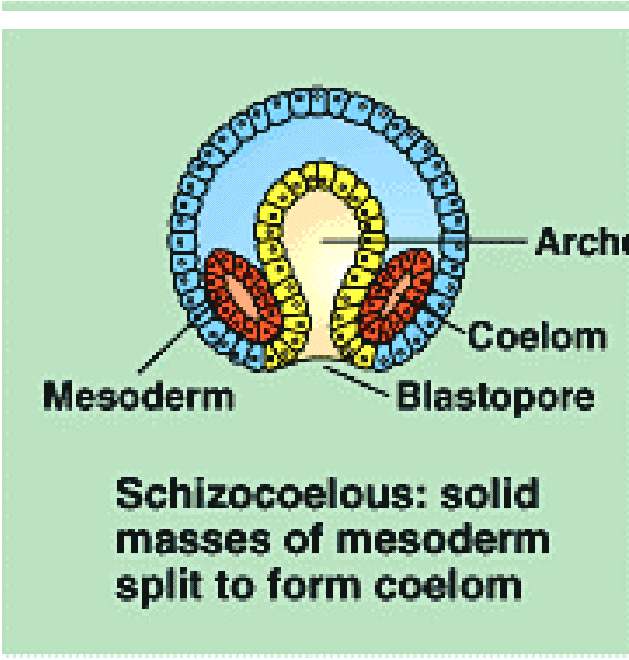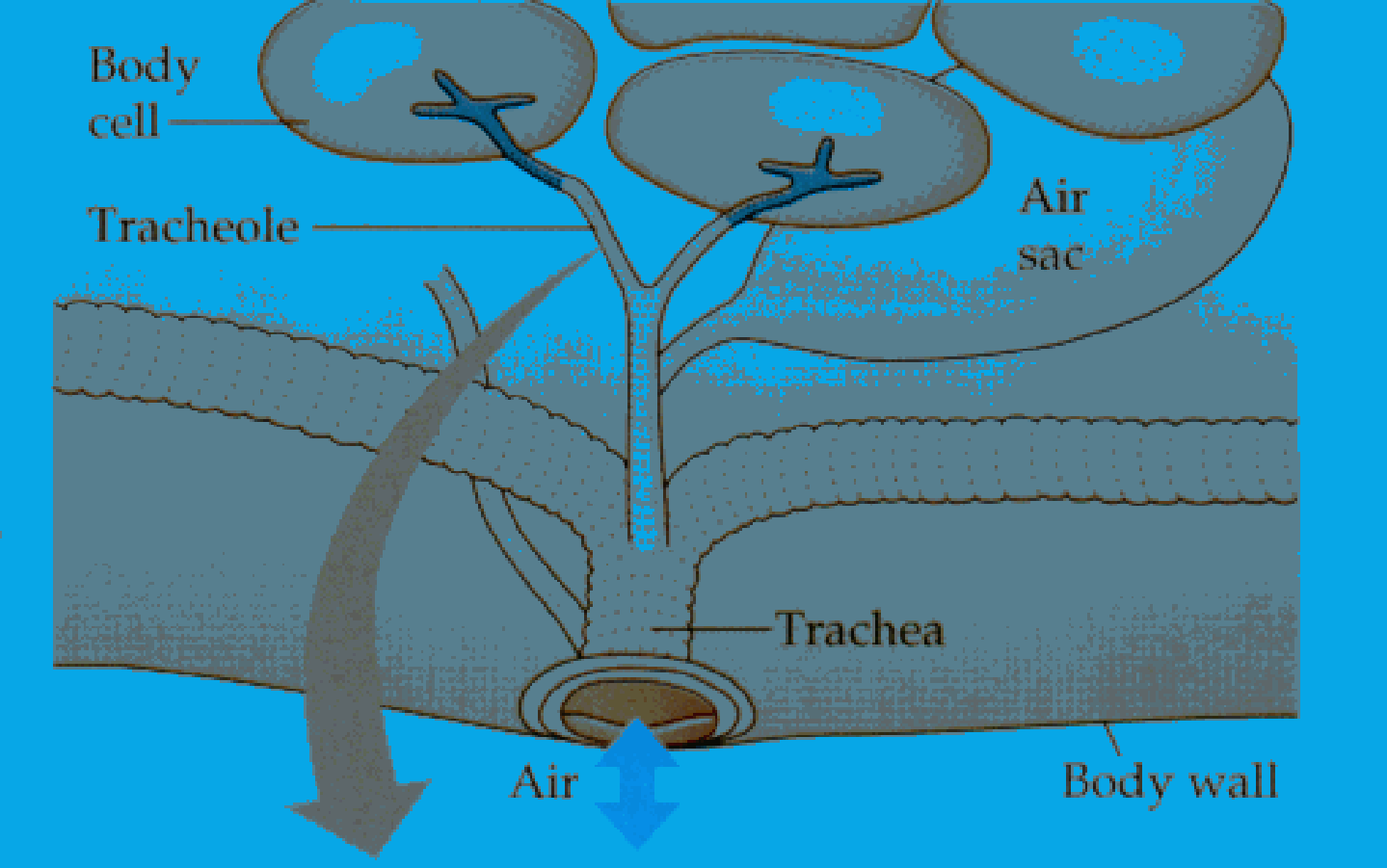Biol 106 exam 3 Spring 2004
- Animals in the phylum Porifera are also called:
- sponges
- worms
- jellyfish
- Which of the following phyla DO NOT have radial symmetry:
- Annelida
- Ctenophora
- Chordata
- Annelids are:
- non-segmented worms
- have a coelom
- are radial symmetric
- Arthropods:
- include crustaceans
- are deuterostomes
- lack an exoskeleton
- Tunicates are:
- protostomes
- echinoderms
- chordates
- This type of ceolom formation, found in mollusks, annelids, and arthropods is characteristic of:
- protostomes
- echinoderms
C. chordates
 Collagen:
Collagen:
- is the least abundant protein in animals
- has low tensile strength
- has a lot of glycine and hydroxyproline
- Large animals, like elephants:
- have relatively light skeletons
- have relatively heavy skeletons
- have difficulty breaking the surface tension of water
- How long does it take for gas to diffuse in water over a distance of one millimeter?
- 100 seconds
- 10 seconds
- 1 second
- Which size of spherical sea organism can rely on diffusion across its outer surface for gas exchange?
- 1 millimeter diameter organism
- 1 centimeter diameter organism
- 1 meter diameter organism
- Which organism has the highest surface area relative to volume (total surface area divided by total volume)?
- 1 millimeter diameter organism
- 1 centimeter diameter organism
- 1 meter diameter organism
- Cnidarians like sea anemones and jellyfish increase their surface area using:
- the gastrovascular cavity
- the coelom
- nematocysts
- The structures of the fish gill that increase surface area are:
- gastrovascular cavity, tentacles, microvilli
- villi, microvilli, brush border
- filaments and lamellae
- Why does blood flow in the opposite direction to capillary flow in the fish gill?
- to increase nutrient exchange
- to maximize oxygen uptake
- this is the only direction of flow that is possible
- The diffusion of oxygen to the capillaries in the vertebrate lung occurs in the:
- tracheoles
- bronchi
- alveoli
- The pathway of air in the flow through bird lung is:
- mouth, posterior air sac, lung, anterior air sac, mouth
- mouth, lung, posterior air sac, mouth
- mouth, lung, mouth

- The picture above is of:
- a frog lung
- an insect tracheal system
- a fish lung
- In the picture above, air enters the animal through the:
- spiracle
- ostea
- sinus
- These animals have two chambered hearts:
- fish
- amphibians
- crocodiles
- Which cardiovascular system does not pump fully oxygenated blood to the systemic capillaries:
- 2 chambered heart
- 3 chambered heart
- 4 chambered heart
- Arteries by definition contain oxygenated blood:
- true
- false
- Digestion in food vacuoles is a way of avoiding:
- self digestion
- food poisoning
- the runs
- In the human stomach, food (primarily protein) is broken down by:
- pepsin
- hydrochloric acid
- mechanical churning
- all of the above
- Which of the following are inactive digestive enzyme precursors:
- pepsinogen
- trypsin
- chymotrypsin
- Which of the following is likely to have the largest absorptive surface area in humans?
- stomach
- small intestine
- large intestine
- Where does cellulose digestion occur in herbivores like rats and koalas
- stomach
- cecum
- small intestine

- The digestive system above is most likely from a:
- carnivore
- omnivore
- herbivore
- insulin is:
- produced by the liver
- a peptide (amino acid derived) hormone
- used to make blood glucose increase
- corticosteriods are:
- produced by the adrenal cortex
- peptide hormones
- used to make blood glucose decrease
- epinephrine (or adrenaline) causes
- increased blood pressure
- decreased glucose levels
- decreased respiration
- Animals in the phylum nematoda:
- are radially lateral
- pseudocoelomates
- deuterostomes
- Which of the following animals has an open circulatory system:
- earthworm
- fish
- insect
- To regulate blood glucose levels, glucose is stored as:
- glycogen in the liver cells
- glucagon in the body cells
- insulin in the pancreas
- Which of the following can be digested by salivary amylase in the mouth
- starch
- protein
- fats
- The part of the neuron that receives signals is called:
- dendrite
- axon
- node of Ranvier
- In long-term stress:
- releasing hormone is produced by the adrenal cortex
- ACTH is secreted (released) by the anterior pituitary
- ACTH is secreted by the hypothalamus
- Vitamin C (ascorbate) is necessary for:
- production of collagen with a normal melting temperature
- cellulose breakdown
- breaking the surface tension of water
- The gastric gland produces
- epinephrine
- mucus, pepsinogen, hydrochloric acid
- cellulase
- In tidal ventilation:
- all of the air is replaced in the lung with each breathing cycle
- only some of the air is replaced in the lung with each breathing cycle
- air is pushed into the lung with positive pressure.
 Collagen:
Collagen: Collagen:
Collagen:
